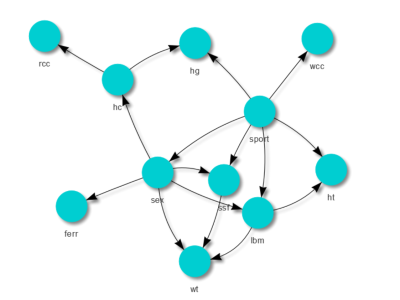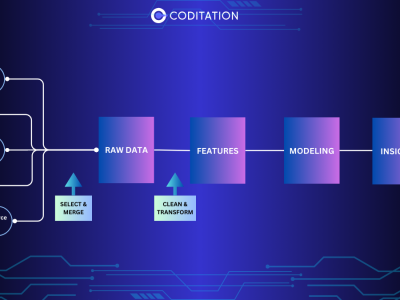Data, in its raw form, often resembles an orchestra tuning up before a grand performance — most instruments hum in harmony, but a few strike jarring, misplaced notes. These discordant notes are the outliers of the data world — rare, extreme values that can distort the melody of analysis. Handling them isn’t about silencing anomalies altogether but about restoring rhythm and balance. Winsorizing, trimming, and transformation are the conductor’s tools to ensure that one blaring trumpet doesn’t drown out the entire symphony.
When One Note Drowns the Orchestra
Imagine analysing the salaries of employees in a company. Most fall between ₹3 and ₹10 lakh per year, but the CEO earns ₹2 crore. If you compute the average, this one number will skew the results, creating a misleading impression of prosperity. Outliers are like these out-of-place figures — they can warp insights, disrupt visual patterns, and confuse algorithms.
For learners in a data analyst course, understanding outliers isn’t a side topic — it’s central to the craft of data interpretation. Whether working on stock prices, healthcare metrics, or retail transactions, outliers appear like uninvited guests who demand special handling. Before applying any model, it’s crucial to decide: should these points be kept, adjusted, or removed?
Winsorizing: Pulling the Extremes Back to Reality
Winsorizing is a subtle art. Rather than deleting extreme values, it reassigns them to less extreme limits. Think of it as tightening the strings of a violin — not cutting them, but bringing them into tune.
For example, in a dataset of 100 incomes, the lowest and highest 5% might be replaced by the values at the 5th and 95th percentiles. This keeps the dataset intact while reducing the disproportionate influence of extremes. The beauty of Winsorizing lies in its balance: it doesn’t ignore outliers entirely but reins them in just enough to restore analytical equilibrium.
In real-world cases, Winsorizing shines in financial modelling and economic forecasting, where rare but extreme events — such as market crashes — can distort averages. Professionals trained in a data analyst course in Nashik often use this approach when handling monetary data or KPIs where retaining all records is vital but their magnitude must be controlled.
However, Winsorizing requires care. Setting thresholds too aggressively may hide meaningful variations. The method rewards practitioners who understand the data’s context, not just its statistics.
Trimming: The Clean Cut Approach
If Winsorizing is tuning the strings, trimming is cutting off the frayed edges. Trimming removes extreme values completely from the dataset, usually those that fall beyond a specified percentile range. It’s like pruning a garden — eliminating wild branches to allow healthier growth.
For instance, when analysing customer spending behaviour, a handful of unusually high transactions might not represent typical users. By trimming the top 1% of values, the analysis becomes more representative of general trends.
Trimming is particularly effective for algorithms that rely on averages or distance measures, such as regression or clustering. However, it sacrifices some information for the sake of stability. In a data analyst course, students learn that trimming must be used judiciously — too much trimming can lead to bias, while too little may leave the data skewed.
Pragmatically, trimming is best suited for large datasets with enough data points that losing a few won’t compromise the statistical power. It’s an act of precision — knowing which branches to prune without cutting the roots.
Transformation: Reframing the Outlier’s Story
Sometimes, outliers aren’t errors but signs of a deeper pattern. Transformation methods, like logarithmic, square-root, or Box-Cox transformations, help reshape data so that extreme values exert less influence. Instead of removing the loud note, the analyst lowers its volume until it harmonises with the rest.
Take the example of household income data — it’s often right-skewed because a small number of households earn far more than the rest. Applying a logarithmic transformation compresses large values while preserving relationships, allowing patterns to emerge more clearly.
Transformation is especially useful when data follows exponential trends or spans wide magnitudes, such as biological measurements, population growth, or digital traffic. For learners in a data analyst course in Nashik, mastering these transformations builds intuition for when to reshape data rather than restrict it — a subtle but powerful distinction in advanced analytics.
The Human Side of Outlier Handling
Beyond formulas, handling outliers is an exercise in judgement. Not all outliers are errors; some reveal critical insights. In fraud detection, for instance, an unusually high transaction may flag potential risk. In healthcare, an abnormal reading might indicate a medical breakthrough rather than a mistake. The analyst’s role is to interpret — not blindly delete.
In a data analyst course, students learn that context is as valuable as computation. Handling outliers blends statistics with empathy — a recognition that extremes, whether in numbers or human behaviour, often carry the story’s most compelling details.
Conclusion: Restoring the Harmony of Data
Dealing with outliers is not about purging imperfection but about preserving truth. Winsorizing adjusts extremes, trimming removes them, and transformation reshapes them — each method a different instrument in the analyst’s orchestra. Together, they ensure that the dataset’s melody remains coherent and trustworthy.
For aspiring professionals in a data analyst course in Nashik, mastering these techniques is akin to learning to balance precision and perception — to recognise when a data point is a flaw, a feature, or a revelation. And for every learner pursuing a data analyst course, the ability to handle outliers gracefully transforms raw data into reliable insight — a true mark of analytical craftsmanship.
For more details visit us:
Name: ExcelR – Data Science, Data Analyst Course in Nashik
Address: Impact Spaces, Office no 1, 1st Floor, Shree Sai Siddhi Plaza,Next to Indian Oil Petrol Pump, Near ITI Signal,Trambakeshwar Road, Mahatma Nagar,Nashik,Maharastra 422005
Phone: 072040 43317
Email: enquiry@excelr.com








Comments